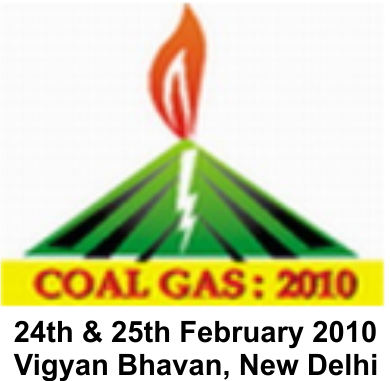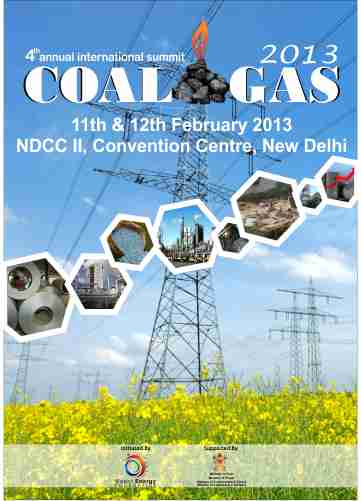
Participant Profile
Country Participants
Messages

Venue:
The Auditorium
NDCC II Convention Centre
NDMC Complex, Parliament Street
New Delhi - 110001
(OPPOSITE TO JANTAR MANTAR)
Initiated By

Supported By

Ministry of Coal
Ministry of Power
Ministry of Environment & Forest
Ministry of Chemical & Fertilisers

Today, the establishment of new power plants in India is strongly dependent on the import of highly volatile fossil fuels. Sustainable renewable energy is becoming an important link in industrialization and development. India is finding ways past energy related growth obstacles through versatile and efficient utilization of its abundant renewable energy resources. In addition, increasing utilization of renewable resources will help India in mitigating climate change and generate as many as 10 million jobs by 2025. The total installed electricity capacity in India at the end of March 2012 was 199,626 MWe, of which 56% is coal based. Coal will continue to dominate the additional capacity to be created in the next two decades.
Even though India has 280 billion tons of coal reserves, utilities are running out of coal, because of problems with domestic production. The ash content is increasing progressively, since 80% of coal is excavated from open-cast mines. Because of this, coal-washing is becoming a necessity, in order to avoid transportation of ash and reduce the need for boiler maintenance. In tandem with growing demand for energy, coal-washing capacities are set to increase exponentially in future.
India needs to master the coal-gasification technology so as to boost both energy efficiency and attendant security. Note that about half the current demand for gas here is from the power sector. We need to indigenise the gasification technology, taking into account the high-ash content of local coal. Instead of burning coal directly as fuel, gasification - a thermo-chemical process - involves transforming the carbon into gaseous compounds. The coal gases are then fired in a gas turbine, much like natural gas, to provide one source of power.
Next, the exhausts from the gas turbine, plus some of the heat generated in gasification, are then used to produce steam to run a steam-turbine generator. The dual source of electric power, termed "combined cycle," vastly improves thermal efficiency in power generation.
Note that while the efficiency rate is just about 30% in standard coal-fired stations and 40-odd per cent using super-critical technology, the mavens hold that, in future gasification plants, the ratio could touch 70-80%. We clearly need to adopt IGCC in a big way. It would mean generating double the power from the same amount of coal, and also arrest the demand for gas in tandem.
Previous Summits
Associate Sponsors
Co Sponsor
Principal Sponsor
Document Sponsor
Knowledge Partner
Lunch Sponsor
Print Media Partner
Photographs
Presentations
Event Summary







